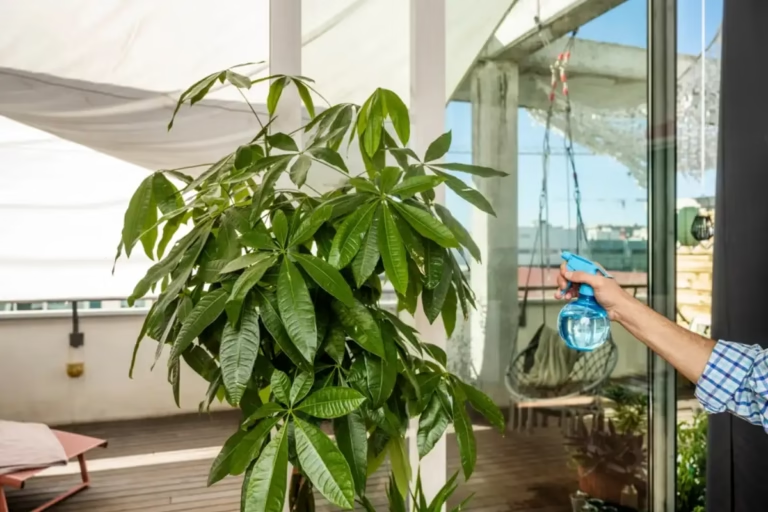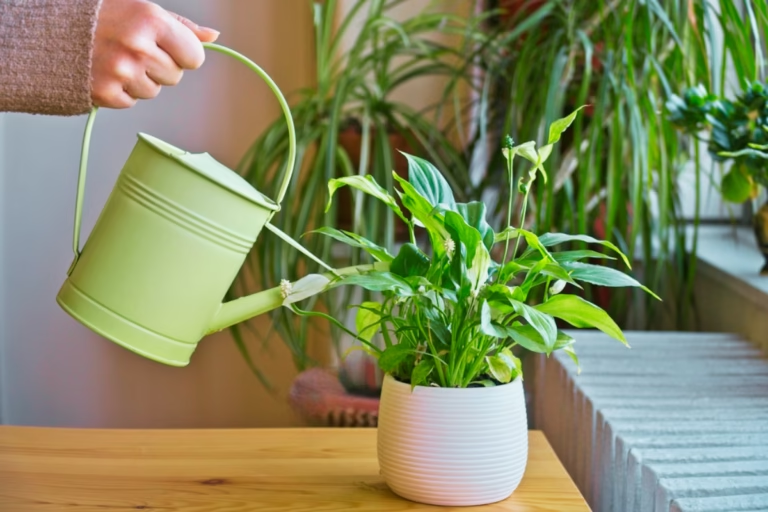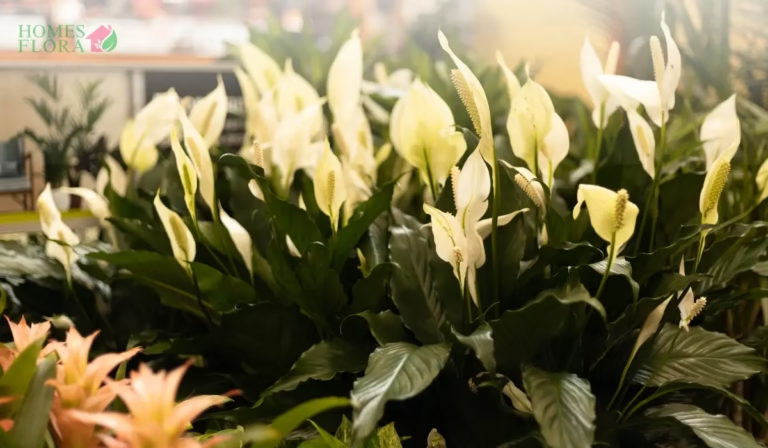How to Grow and Care for Chinese Evergreen Plant (Aglaonema)

The Chinese Evergreen (Aglaonema) is more than just a houseplant—it’s a resilient, air-purifying companion that brings life and calm to any space. Whether you’re a seasoned plant parent or a beginner, this low-maintenance beauty thrives in low light and adapts to your lifestyle. But let’s be real: caring for plants isn’t always easy. Yellow leaves, slow growth, or worries about toxicity can make you feel overwhelmed. Don’t worry—we’ve got you covered! In this blog, we’ll walk you through everything you need to know about Chinese Evergreen, from solving common problems to choosing the perfect variety.
|
Aspect |
Details |
|---|---|
|
Common Name |
Chinese Evergreen |
|
Scientific Name |
Aglaonema |
|
Family |
Araceae (Arum family) |
|
Other Names |
Aglaonema, Philippine Evergreen, Poison Dart Plant (due to toxicity) |
|
Origin |
Tropical and subtropical regions of Asia (e.g., Philippines, Malaysia) |
|
Type |
Evergreen perennial |
|
Foliage |
Glossy, variegated leaves (green, silver, red, pink, or yellow patterns) |
|
Height |
1–3 feet (indoors) |
|
Toxicity |
Toxic to pets and humans if ingested |
|
Special Feature |
Air-purifying, low-light tolerant, easy to care for |
Chinese Evergreen Varieties: A Stunning Collection for Every Home
The Chinese Evergreen plant (Aglaonema) is celebrated for its diverse and eye-catching varieties. Each type boasts unique colors, patterns, and growth habits, making it a versatile choice for plant lovers. Here’s a closer look at some of the most popular varieties:
Red Chinese Evergreen
The Red Chinese Evergreen is a showstopper with its vibrant red and green foliage. It’s perfect for adding a pop of color to your indoor space. This variety thrives in medium indirect light and is relatively low-maintenance, making it ideal for beginners.
Pro Tip: Pair it with neutral-colored pots to make its red hues stand out even more.
Silver Bay Chinese Evergreen
The Silver Bay Chinese Evergreen is a classic favorite, known for its silvery-green leaves with dark green edges. It’s one of the most resilient varieties, tolerating low light and neglect like a champ.
Pro Tip: This variety is excellent for offices or rooms with limited natural light.
Silver Queen Chinese Evergreen
The Silver Queen Chinese Evergreen features elegant, elongated leaves with a striking silver and green pattern. It’s a slow grower but worth the wait for its stunning appearance.
Pro Tip: Use this variety as a focal point in your living room or bedroom decor.
Chinese Evergreen Pink
If you’re looking for something unique, the Pink Chinese Evergreen is a must-have. Its pink and green variegated leaves add a touch of whimsy to any space. This variety prefers bright, indirect light to maintain its vibrant colors.
Pro Tip: Pair it with other pink-toned decor for a cohesive look.
Siam Chinese Evergreen Plant
The Siam Chinese Evergreen plant is a bold variety with deep green leaves and striking red veins. It’s a statement piece that adds drama to your indoor garden.
Pro Tip: This variety thrives in moderate humidity, so consider placing it in a bathroom or kitchen.
Maria Chinese Evergreen
The Maria Chinese Evergreen is a hardy variety with dark green leaves and silvery patterns. It’s perfect for low-light conditions and is incredibly forgiving for beginners.
Pro Tip: Use it to add texture and depth to your plant collection.
Requirments for the Chinese Evergreen Care
The Chinese Evergreen (Aglaonema) is a beloved houseplant known for its stunning foliage and low-maintenance nature. Whether you’re a beginner or a seasoned plant enthusiast, learning how to care for Chinese Evergreen is simple and rewarding. Let’s dive into the essentials to keep your Chinese Evergreen houseplant healthy and vibrant.
Light Requirements
When it comes to caring for Chinese Evergreen, light is one of the most important factors. This plant thrives in low to medium indirect light, making it perfect for offices, bedrooms, or any space with limited sunlight. However, variegated varieties (like Red Siam or Silver Bay) may need slightly brighter light to maintain their colorful patterns. Avoid direct sunlight, as it can scorch the leaves.
Pro Tip: If your Chinese Evergreen’s leaves are losing their vibrancy, it might be a sign it needs more light. Move it closer to a window, but keep it out of harsh rays.
Watering
Proper watering is key to care for Chinese Evergreen plant. This plant prefers its soil to dry out slightly between waterings. Overwatering can lead to root rot, while underwatering may cause the leaves to droop or turn brown.
- How Often to Water: Water every 7–10 days, depending on the season and humidity levels.
- Signs of Overwatering: Yellow leaves or mushy stems.
- Signs of Underwatering: Dry, crispy leaf edges.
Pro Tip: Use the “finger test”—stick your finger 1–2 inches into the soil. If it feels dry, it’s time to water.
Soil
The right soil mix is crucial for care of Chinese Evergreen. This plant loves well-draining, aerated soil that retains some moisture without becoming waterlogged. A mix of potting soil, perlite, and peat moss works perfectly.
Pro Tip: Ensure your pot has drainage holes to prevent water from pooling at the bottom.
Temperature and Humidity
Chinese Evergreen thrives in warm, humid environments, similar to its tropical origins. Here’s what you need to know:
- Temperature: Keep it between 65°F–80°F (18°C–27°C). Avoid cold drafts or sudden temperature drops.
- Humidity: Aim for moderate to high humidity. If your home is dry, mist the leaves occasionally or use a humidifier.
Pro Tip: Place your plant in a bathroom or kitchen where humidity levels are naturally higher.
Fertilizers for Chinese Evergreen
To keep your Chinese Evergreen houseplant lush and healthy, feed it with a balanced liquid fertilizer during the growing season (spring and summer).
- How Often: Once a month.
- What to Use: A diluted 20-20-20 fertilizer works well.
Pro Tip: Avoid over-fertilizing, as it can lead to salt buildup in the soil, causing leaf burn.
Pruning Your Chinese Evergreen
Pruning is an essential part of how to care for Chinese Evergreen. Regularly trim yellow or dead leaves to encourage new growth and maintain its shape. Use clean, sharp scissors to avoid damaging the plant.
Pro Tip: Pruning also helps improve air circulation, reducing the risk of pests and diseases.
Potting and Repotting
Chinese Evergreen is a slow grower, so it doesn’t need frequent repotting. However, when it outgrows its pot, follow these steps:
- When to Repot: Every 2–3 years or when roots start peeking out of the drainage holes.
- How to Repot: Choose a pot 1–2 inches larger than the current one. Gently loosen the roots and place it in fresh, well-draining soil.
Pro Tip: Spring is the best time to repot, as the plant is entering its active growth phase.
Chinese Evergreen Propagation
Propagating your Chinese Evergreen plant (Aglaonema) is an easy and rewarding process. Here’s how to do it:
- Choose a Healthy Plant: Select a mature Chinese Evergreen houseplant with strong stems and healthy leaves.
- Prepare Your Tools: Use clean, sharp scissors or a knife to avoid infections.
- Take Stem Cuttings: Cut a 4–6 inch stem just below a leaf node. Ensure the cutting has at least 2–3 leaves.
- Root in Water or Soil:
- Water Propagation: Place the cutting in a jar of water, ensuring the node is submerged. Change the water every few days.
- Soil Propagation: Dip the cut end in rooting hormone and plant it in moist, well-draining soil.
- Wait for Roots: In 4–6 weeks, roots will develop. Once they’re 1–2 inches long, transplant the cutting into a pot.
Pro Tip: Spring or early summer is the best time to propagate, as the plant is in its active growth phase.
Common Problems and Solutions
Even the hardiest plants face challenges. Here’s how to tackle common issues with your Chinese Evergreen plant:
Chinese Evergreen Yellow Leaves
Yellow leaves are often caused by overwatering or poor drainage.
- Solution: Check the soil moisture and adjust your watering schedule. Ensure the pot has proper drainage.
Brown Leaves
Brown tips or edges usually indicate low humidity or underwatering.
- Solution: Mist the leaves regularly or use a humidifier. Water the plant when the top inch of soil feels dry.
Pests
Spider mites and mealybugs can infest your Chinese Evergreen houseplant.
- Solution: Wipe the leaves with a damp cloth or use neem oil to deter pests.
Curling Leaves
Curling leaves may be a sign of underwatering, low humidity, or pests.
- Solution: Check the soil moisture, increase humidity, and inspect for pests.
Chinese Evergreen Indoor and Outdoor
Indoor vs. Outdoor Care
- Indoor: Chinese Evergreen thrives indoors in low to medium light. It’s perfect for homes, offices, or apartments.
- Outdoor: In tropical climates, it can grow outdoors in shaded areas. Avoid direct sunlight and frost.
Chinese Evergreen Bloom
While the Chinese Evergreen flower is rare indoors, it can produce small, calla-like blooms in optimal conditions. These flowers are a bonus but not the main attraction—its foliage steals the show!
Chinese Evergreen Hybrid
Hybrid varieties like Aglaonema ‘Sparkling Sarah’ or ‘Golden Bay’ offer unique colors and patterns. These hybrids are bred for their striking appearance and resilience.
Decor Ideas: Styling Your Chinese Evergreen for Maximum Impact
The Chinese Evergreen plant (Aglaonema) isn’t just a houseplant—it’s a versatile decor element that can transform any space. Here are some detailed and creative ideas to showcase your Chinese Evergreen in style:
Centerpiece for Tables and Shelves
The lush, variegated foliage of the Chinese Evergreen makes it a perfect centerpiece.
- Dining Table: Place a medium-sized Chinese Evergreen in a decorative pot at the center of your dining table. Pair it with candles or small succulents for a balanced look.
- Bookshelves: Use smaller varieties like Maria Chinese Evergreen or Silver Bay to add a touch of greenery to your shelves. Alternate with books and decorative items for a curated aesthetic.
Pro Tip: Choose pots in neutral tones like white, gray, or terracotta to let the plant’s colors shine.
Office and Workspace Decor
Brighten up your workspace with a Chinese Evergreen to boost productivity and mood.
- Desk Plant: A compact variety like Maria Chinese Evergreen or Emerald Beauty is perfect for desks. Its air-purifying qualities will help improve indoor air quality.
- Conference Tables: Place a few Chinese Evergreen plants in sleek, modern pots on conference tables for a fresh and professional look.
Pro Tip: Rotate the plant every few weeks to ensure even growth and prevent leaning.
Seasonal Decor
Incorporate your Evergreen Chinese into seasonal decor for a festive touch.
- Holiday Theme: During the holidays, wrap the pot in festive paper or add fairy lights around the plant for a cozy, celebratory vibe.
- Spring Refresh: Pair your Chinese Evergreen with blooming flowers like orchids or peace lilies to welcome spring.
Pro Tip: Use seasonal accents like pinecones, ribbons, or decorative stones to enhance the theme.
FAQs (Frequently Asked Questions)
FinalThoghts
Chinese Evergreen (Aglaonema)! We hope this guide has answered all your questions and provided you with the tools to care for your plant with confidence. Whether you’re a beginner or a seasoned plant parent, our goal was to make sure you felt supported and informed every step of the way, from understanding its light and water needs to solving common problems and even styling it in your home, we’ve covered it all. If you ever feel stuck, just come back to this blog—we’re here to help you grow not just your Chinese Evergreen, but also your love for plants.
Remember, plants are more than just decor; they’re companions that bring life, calm, and joy to your space. So, go ahead, give your Chinese Evergreen the care it deserves.




